La ménagerie royale de Versailles
Not much is left of it today, but back in the days the ménagerie royale was one of the major attractions of Versailles. The court loved animals, which can already be seen when looking at the vast amount of pets that lived at the palace. Louis XIV and his court were especially fond of dogs.
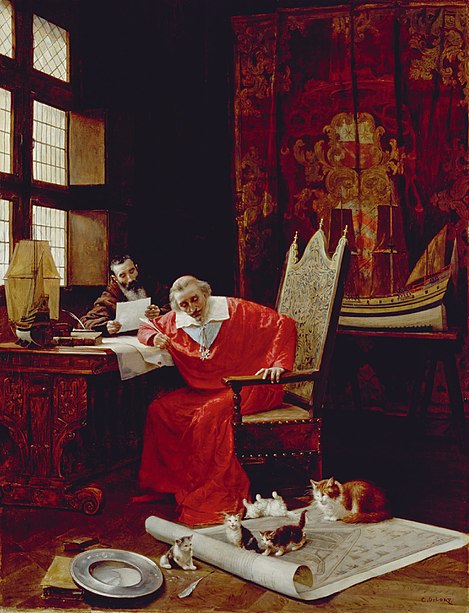
The Sun King loved Great Pyrenees, which were bred in Spain, his wife Marie-Thérèse was more into smaller dogs, also had parrots and pet monkeys, and Liselotte von der Pfalz was always surrounded by a horde of small pet dogs, who slept in her bed and kept her warm. She wept bitterly whenever one fell ill or died and one of them once gave birth on one of her expensive robes. Cats were not too much in favour until later on, for reasons of superstitions. Cats were connected with a dark world and thought to be linked to evil. Cardinal Richelieu, however, was very fond of them. He owned fourteen cats (Soumise, his favourite, Rubs sur l’Ongle, Mounard le Fougueux, Gazette, Ludovic le Cruel, Mimi-Paillon, Felimare, Ludoviska, Serpolet, Pyrame, Thisbe, Racan and Perruque, are the names of the cats that are known.) and had two caretakers for them. The cats ruled his apartment, had an own room next to his bedroom, slept on his important papers, and inherited a fortune as he passed away.
For the more exotic kind of animals, Louis XIV had a menagerie built at Versailles. It was actually one of the first building projects, for it was common for a grand court to have exotic animals to behold. Not just for the general amusement of the courtier and to enhance the King’s glory, but also for natural science and education. When one of the animals passed away, the remains were handed to selected scientists to study.
The construction of Versailles’ menagerie began in 1662 and was finished in 1668. It was located at the south end of the Grand Canal, along the street from Versailles to Saint-Cyr, at a place which Louis XIV had bought in 1662 and was once a farm called La Boissière. A large octagonal observation pavilion, with a balcony and slate dome, formed the centre, from which fences/walls diverted to create enclosed areas in a sort of fan-pattern. A different building close-by served as aviary for exotic birds. Versailles menagerie had the purpose to observe the animals and impress the visitors, while the one Louis had build in Vincennes served a totally different purpose. The one in Vincennes was used for staged fights between exotic animals. The Persian ambassador was entertained there with a staged fight between a tiger and an elephant.

Getting the animals from their native lands to Versailles was not an easy task. For Louis, the display of a vast variation of them meant to show off his power. The more animals from all corners of the world, the better his political connections and the greater his acumen. Some animals were sent to Versailles as gift from his allies, others were ordered. The Sun King charged his Minister Colbert with acquiring the desired specimens for him, but the mortally rate was high during the long distances they had to travel. Colbert thus ordered that only young animals ought to be captured and sent en route to Versailles via ships, from Levant and Tunisia among other places, and that only during summer, they seemed to cope better this way. Later on, Colbert hired a gentleman, Mosnier Gassion, who went as far as Egypt to get Louis XIV ostriches and exotic ducks. Among the animals received as gifts, were an elephant, coming all the way from Congo, and large majestic cats from the Arabian world. The menagerie was a must on the schedule of Versailles visitors. Louis XIV often invited to entertainments there, which included pleasant carriage rides to the menagerie or trips on boats via the Grand Canal.
As Louis XIV grew older, he got a little bored by it all and had the menagerie renovated to gift it to his new favourite at court, the twelve-year old Marie-Adélaïde de Savoie, who had just married his grandson. Marie-Adélaïde turned the whole thing into her private pleasure garden and hosted afternoon entertainments and evening soirees in the pavilion. One year before her sudden death in 1712, a Corsican gentleman wrote about two animals to that point unknown at court, and describes them as étranges moutons mâle et femelle -strange male and female sheep …. it were llamas.
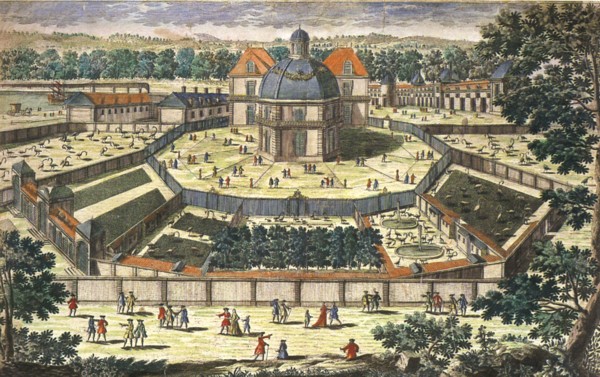
The menagerie was neglected after the death of the Sun King and fell into disrepair. The court moved away from Versailles during the Regency and as it returned, the buildings were in no good shape anymore. The Regent had an elephant installed there, for the education and distraction of Louis XV, along with gifted tiger and lion babies, but Louis XV wasn’t really too much into it. He only visited once and later put his mistresses in charge of the menagerie. The conditions of the menagerie declined swiftly and nobody really took care of it anymore. Louis XV still received animal gifts from all over the world, but he lacked the money and interest to take care of them properly. In 1772, yet another elephant was gifted for Versailles’ menagerie, but nobody really prepared anything for it. The elephant had to walk all the way from the coast to Versailles, over 300 miles, to be put into an enclosure with crumbling walls, from which the elephant escaped in 1782… rampaged through the gardens and then apparently drowned in the Grand Canal.
Louis XVI cared a bit more about the animals than Louis XV did, but also he lacked the money to renovate the menagerie properly. He did what he could and sought to at least return it to its former glory by restocking. He ordered “An elephant, 2 zebras, male and female, mandrill and baboon monkeys, 6 guineafoul”. The only animal he received from this shopping list, was a single zebra. But he had a lion, a panther, a tiger, hyenas, some ostriches and various kinds of monkeys to behold instead.
As the Revolution swept over France, by which time the animals were pretty much roaming freely around the menagerie, those that survived until then, the lion among them, were brought to the Jardin des Plantes in Paris. Others ended up stuffed, some were apparently eaten. The great famine of 1795 killed most of the remaining ones.

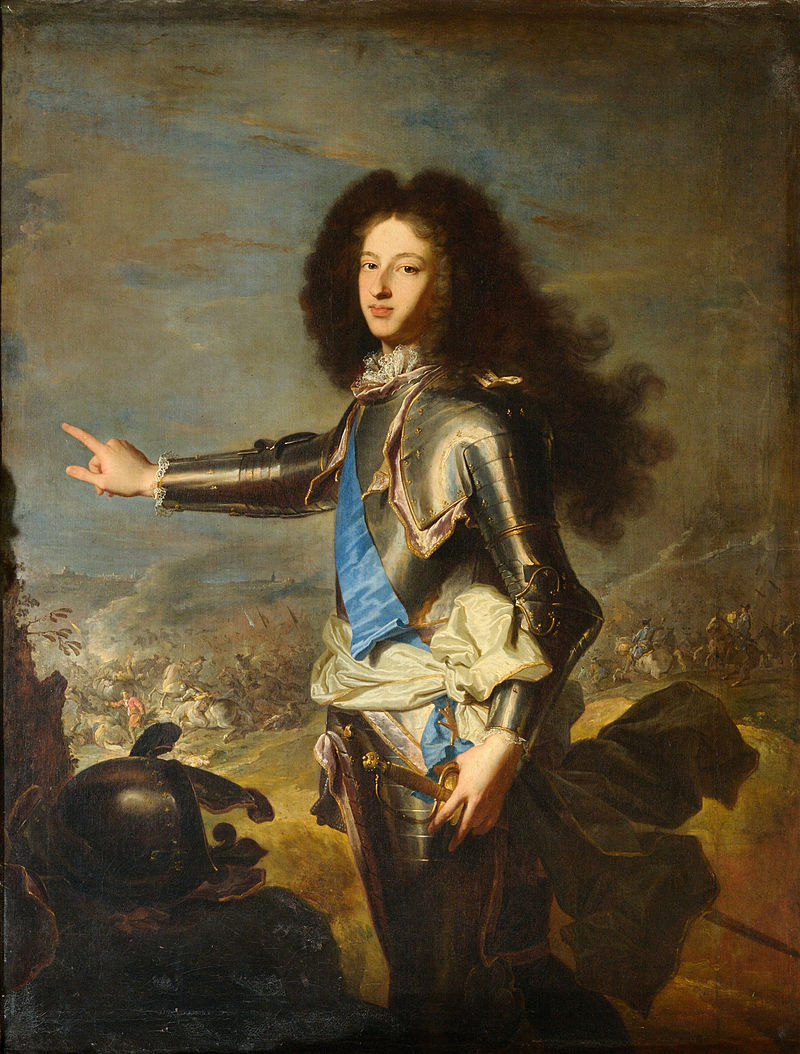

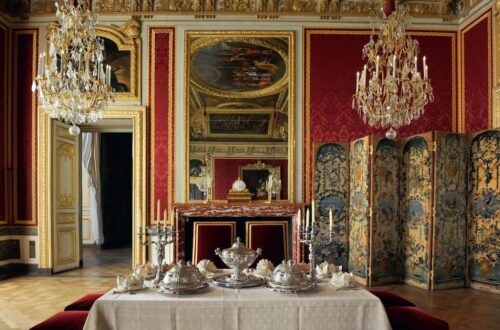
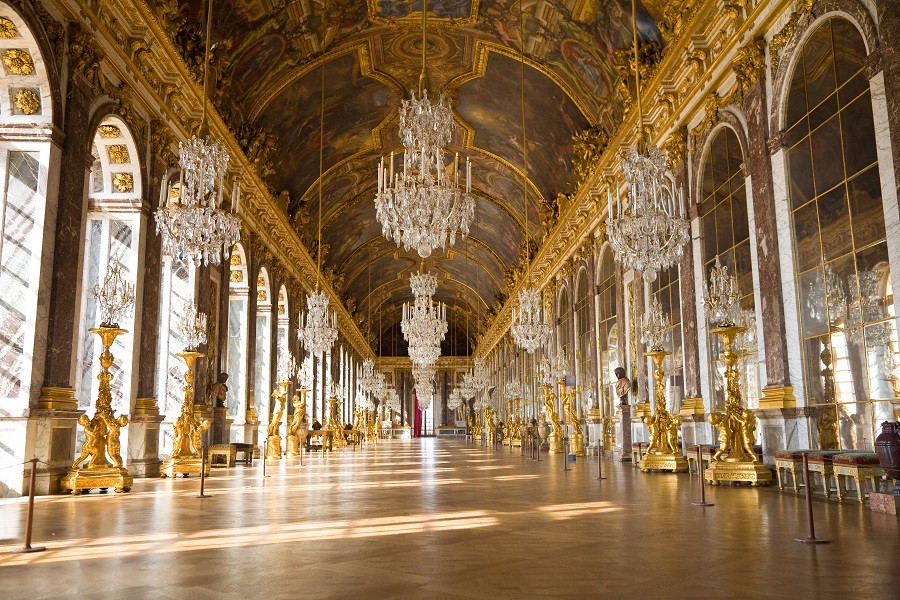

One Comment
Susan Chapek
That he loved cats makes me feel much more friendly to Richelieu.